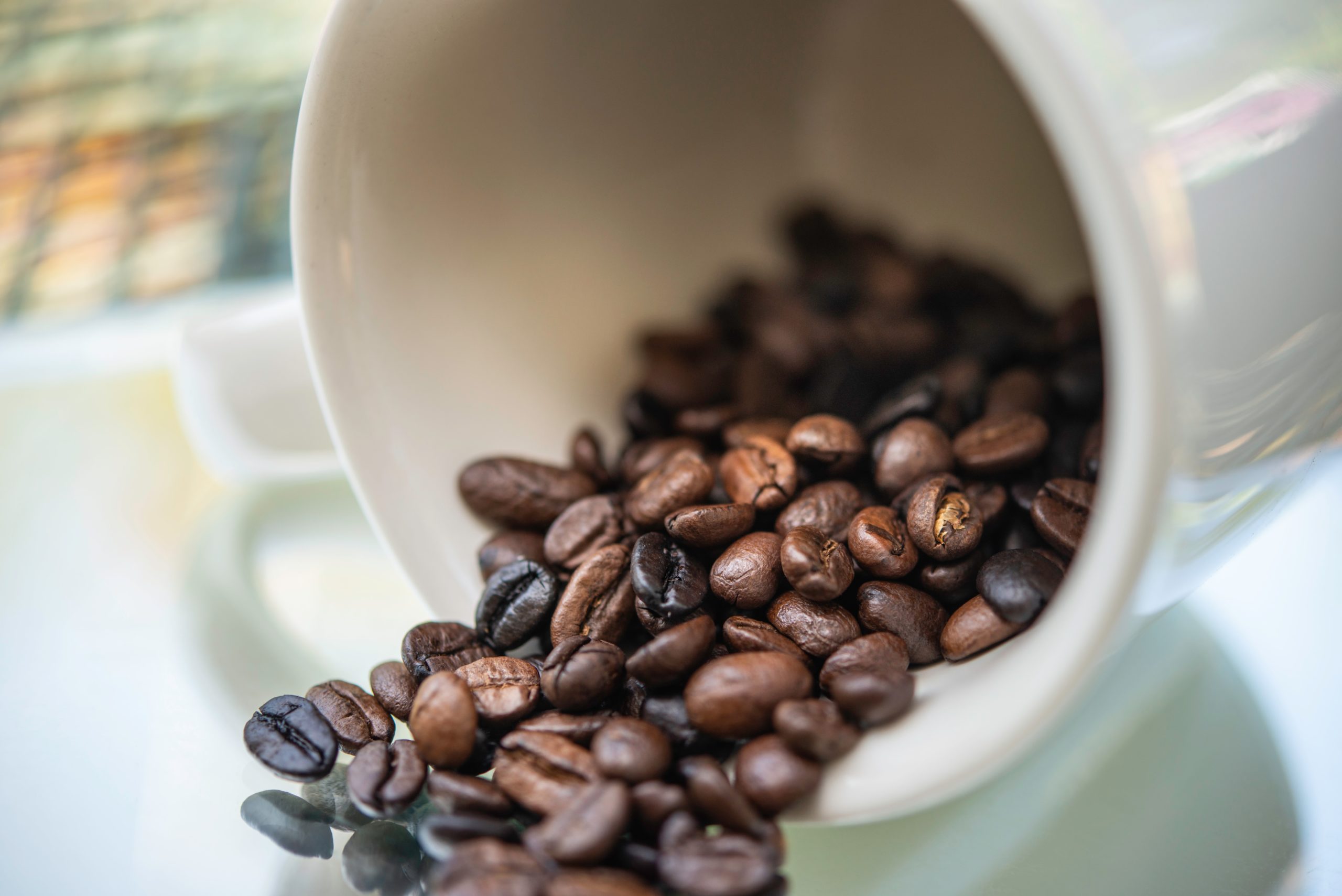This is our coffee blending guide.
You will learn what blending coffee is, how to create your blend, and what blending methods are.
Let's take a look.
What Is a Coffee Blend?

A blend is a mixture of several coffees. You can create a unique taste by combining coffee beans from different regions. The more countries are represented in one coffee blend, the more complex and multifaceted the drink will be.
Coffee specialists blend between two and ten types of single-origin coffee beans. Blends can contain either 100% Arabica coffee or both Arabica and Robusta. The latter adds strength and tart bitterness to the drink.
The percentages of different types of coffee, and also the methods of collecting, processing, and roasting each type of coffee, is very important for blending.
Professional tasters are involved in the creation of coffee blends. Blending is an extremely difficult and demanding job. To create a blend, you need to be able to combine not only different varieties but also different roasts.
How to Choose a Coffee Blend
To choose a coffee blend, you need to know about the flavor profiles of single-origin coffees and about the effect of roasting on the taste of finished coffee.
For example, coffee brewed using a medium-roasted coffee blend of Kenyan and Colombian varieties has a delicate flavor that can be softened with milk without losing its invigorating effect.
If this coffee blend is dark-roasted, the brewed coffee will be richer with a pronounced bitterness.
To learn more about how single-origin beans and roasting affect coffee's flavor, check out our article, Types of Coffee Beans.
Why Are Coffee Blends Created?
Each type of coffee bean has its own characteristics.
The flavor characteristics of each coffee variety have come to be appreciated with the emergence of specialty coffee culture. Before this culture emerged, espresso was mainly prepared with dark-roasted coffee blends.
Blends of two or more coffees are created to provide new tastes. For stability, blends usually contain four or more varieties.
Espresso Blends
If your espresso is made with an espresso blend, it should go great with milk and be stable from cup to cup.
Most espresso blends use Brazilian coffee as a base. As an alternative for the base, blends can use beans from Mexico, Peru, or Panama. The base coffee for espresso must be as unobtrusive as possible while also contributing to the body and sweetness of the drink.
Arabica is the basis for espresso coffee blends. It has a mild, delicate taste with a characteristic acidity and contains a huge amount of aromatic oils. During roasting, these oils dissolve in the beans, and during brewing they transfer a full range of aromas into the cup of coffee.
Robusta is often added to espresso blends. It's considered less refined in terms of aroma, but there are coffee lovers who prefer Robusta's bitter taste.
Robusta is less particular about growing conditions and more resistant to pests. Therefore, the price of Robusta beans can be several times lower than that of Arabica beans. If you blend 70% Arabica and 30% Robusta, the coffee will be much cheaper, but will still taste good and have a fragrant aroma.
Coffee blends with added Robusta give espresso shots a thicker crema and also impart a bitterness to the drink. Robusta also adds more caffeine to the blend, which balances the cup, giving the coffee a thicker, fuller body.
Creating Your Coffee Blend
For coffee blending, you will need several single-origin coffees.
First, you need to determine which coffees to include in your blend.
You will need to taste each type of coffee separately. This will allow you to find out what taste each variety has.
Brew each type of coffee. Taste each coffee and make notes about its aroma, bouquet, acidity, body, and aftertaste. We have described this process in more detail in our coffee cupping article.
Once you've tasted each coffee, you can determine which varieties complement each other's flavors.
Once you've selected the coffees for your blend, decide on the base varieties. You will add other varieties to the base during the blending process.
Getting Your Coffee Ratios Correct
Once you've selected the coffees for your blend, start experimenting with ratios. This is done by trial and error.
We recommend using five or fewer coffees per blend. Each coffee should make up at least 8% of the blend.
When creating your first blend, it's best to use three different types of coffee beans from different regions. This will make it easier for you to understand blending principles and find a balance of flavors.
The ratio you choose depends on your personal preference. For example, you could use 20% Guatemalan coffee beans, 40% Kenyan, and 40% Brazilian. Or you could use a 30:30:40 or 60:20:20 ratio.
Try different ratios and pay attention to any changes in flavor.
Coffee blending is a creative process—there are no hard and fast rules. The most important thing is to record your observations at each step of the process.
It's also a good idea to keep detailed notes of your ideas handy and not be afraid to come back and try something else.
When testing for taste, brew the finished blend several times. The first brewed coffee may seem awful to you, but the second one may be perfect. This is the only way you can understand whether the blend is high quality.
Experimentation is the best part of the coffee blending process, after all.
What to Focus On
Poorly chosen coffee blends are difficult to understand: they can be too smooth, too bitter, or have other imperfections.
If you feel that something has gone wrong, don't be discouraged. Imperfections are landmarks that will help you find out what is missing or what is over-represented in the blend.
Here is what you should focus on when creating a blend;
1
Body, acidity, and rich taste.
Small proportions of freshly roasted beans from Colombia, Costa Rica, and Guatemala are used for full-bodied acidity and a rich coffee flavor.
Because these coffees are quite acidic, they are added to blends in small quantities.
2
Complex, bright taste.
To add complexity and brightness to the blend, coffees from Ethiopia, Kenya, Yemen, and other African countries are used.
Naturally processed Ethiopian coffee adds a powerful blueberry or raspberry flavor to the blend. Coffee beans from Kenya add juicy fruity notes and a long-lasting aftertaste.
3
Crema and strong aroma.
Freshly roasted coffee beans from the Asia-Pacific region are used to add density to espresso crema. Beans from Sumatra, Sulawesi, Java, East Timor, and New Guinea are good options.
To Pre-blend or to Post-blend?
Two methods are used to create coffee blends: pre-blending and post-blending.
Pre-blending
This is a method in which single-origin coffee beans are blended before roasting.
The difficulty with this method lies in the fact that the beans have different densities, sizes, and amounts of sugars. When roasted together, the beans take different lengths of time to develop their unique characteristics.
This method produces a smoother coffee flavor.
Post-blending
This method involves blending already-roasted coffee beans.
The process is simpler but involves more steps in the sampling and mixing stages.
This is a more practical option if you decide to create a blend of four or more coffees.
Conclusion
A coffee blend should have a more balanced flavor than each individual coffee that's part of it.
To create coffee blends you need to be able to easily distinguish the flavor profiles of different coffees. This all comes with experience, so here's one tip: don't be afraid to experiment.
